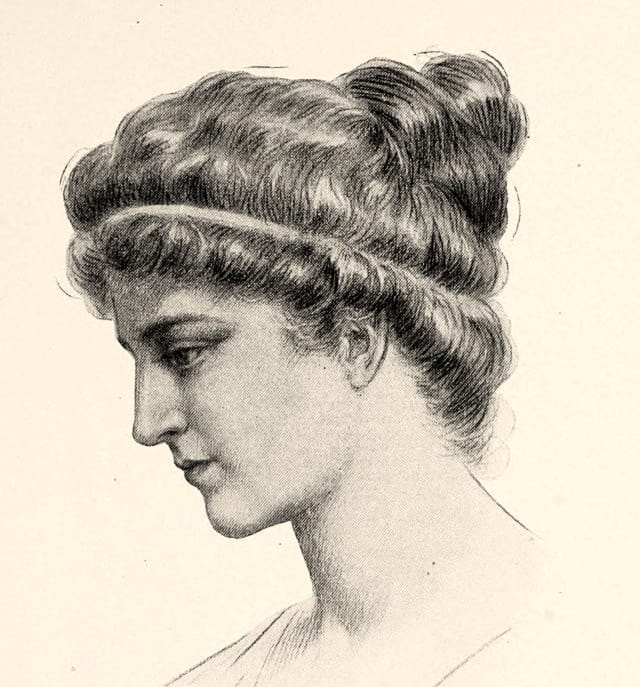Women in Science: Hypatia

Hypatia was one of the last great thinkers of ancient Alexandria as well as one of the first women to study and teach mathematics, astronomy and philosophy. Though remembered more for her brutal death on the streets of Alexandria in the year 415, her life was an interesting and dramatic one, offering an eye-opening insight into the conflict between science and religion during ancient antiquity.
Historical Background
Alexandria was founded by Alexander the Great centre in 331 B.C., and quickly grew into a cultural centre for learning and knowledge in the ancient world. Its decline begun in 48 B.C. when Julius Caesar conquered the city and accidentally burned down The Library of Alexandria, which housed a collection of more than half-million scrolls. It was rebuilt shortly after; luckily, many of the scrolls remained unharmed.
When the Roman Empire split in 364, Alexandria became part of the eastern half. As a result, fighting ensued among Christians, Jews and pagans.
Civil war after civil war destroyed much of the remaining contents of The Library. Its influence waned over time as many of its collections were sold or destroyed and its buildings were converted into other facilities. It was ultimately Ptolemy VIII's rise to power, among other events, that marked the hastened decline of Alexandria's importance as an intellectual centre. He made it his mission to expel several Alexandrian scholars from the city, including the chief librarian Aristarchus of Samothrace who had allegedly supported Ptolemy VIII's political rival. This open hostility displayed by Ptolemy VIII caused other scholars to relocate to Athens and Rhodes. The situation was made worse when the Roman emperor Theodosius I issued a decree in favour of the destruction of pagan temples in the empire, including the Serapeum. The last remnants of The Library of Alexandria as well as the museum likely disappeared during this time as well. The last known member of the museum was Hypatia's father, Theon, a mathematician and astronomer.
Early Life
Though the exact date of Hypatia's birth is unknown, it is speculated that she was born somewhere between 350 and 370 AD in Alexandria, Egypt which was then part of the Eastern Roman Empire. She was the daughter of the mathematician endeavour who was the head of a school called the "Mouseion", a highly exclusive and prestigious establishment. Theon's biggest achievement in his career as a scholar was the production of a new edition of Euclid's Elements, where he corrected scribal errors that had been made over the course of 700 years of transcribing. This new edition became the most widely-used textbook edition of Elements for centuries. This remarkable achievement made him widely seen as a great mathematician of his time. However, in modern times, his mathematical work is often dismissed due to its "trivial" and "completely unoriginal" nature.
Theon taught mathematics and astronomy to his daughter, and she collaborated on some of his commentaries. It is speculated that Book III of Theon's version of Ptolemy's Almagest - the work that established the Earth-centric model for the universe - was actually Hypatia's work.
Career and Influence
Neoplatonism is a version of Platonic philosophy that emerged in the 3rd century AD. The Neoplatonists believed in the pre-existence, and immortality of the soul. The human soul consists of a lower irrational soul and a higher rational soul, both of which can be regarded as different powers of the one soul. During the late fourth century, there were two main varieties of Neoplatonism taught in Alexandria. One was the overtly pagan religious Neoplatonism taught at the Serapeum, an ancient Greek temple built by Ptolemy III Euergetes. Its teachings were greatly influenced by the teachings of Iamblichus, a Syrian Neoplatonist and disciple of Porphyry of Tyre. The second variety of Neoplatonism was pioneered by Hypatia and her father, except their teachings were based on those of Plotinus, a Greek Platonist philosopher, born and raised in Roman Egypt.
Hypatia established herself as a teacher of what is now known as the Neoplatonic school, known at the time for its philosophy. She taught students from all over the Mediterranean, lecturing on the writings of Plato and Aristotle. She was viewed by many as the world's leading mathematician and astronomer of her time which earned her many loyal students and large audiences. One of her most prominent students was Synesius of Cyrene, who later became a bishop of Ptolemais in 410. Even after, he continued to exchange letters with her; these correspondences have become a primary source of information about Hypatia's career and reputation.
One of Synesius's letters mentions Hypatia teaching him how to craft a silver plane astrolabe as a gift. An astrolabe is a device that calculates time and celestial positions based on stars and planets. Specifically, the "plane astrolabe" uses stereographic projection to map the heavens onto a flat surface, unlike the larger armillary spheres used for display. This portable tool allowed for practical celestial measurements.
Teaching was not Hypatia's only endeavour, she also made an effort to preserve the Greek mathematical and astronomical heritage during the turbulent era she lived in. She is credited with commentaries on Apollonius of Perga’s Conics on geometry and Diophantus of Alexandria’s Arithmetic on number theory.
Political Instability
Despite being opposed to Neoplatonism, Theophilus I of Alexandria, who destroyed the last of Alexandria’s great library, tolerated Hypatia and regarded her as an ally. He permitted her to establish close relationships with prominent political leaders, one of them being Orestes, the Roman prefect of Alexandria. These powerful connections made her extremely popular with the people of Alexandria as well as a profound political influence.
Following his sudden death in 412, archbishop Theophilus was succeeded by his nephew, Cyril, who continued his uncle's tradition of showing hostility toward other faiths. He had not been officially named successor, however, which led to a violent power struggle in Alexandria. With Cyril as the head of the main religious body and Orestes, the aforementioned Roman prefect, in charge of the civil government, a bitter rivalry sparked between the two and a fight for power began. This fight reached its peak when Cyril led a crowd that expelled all Jews from the city following a massacre of Christians by Jewish extremists. Orestes was appalled by this and refused Cyril's attempts at reconciliation, leading to an unsuccessful assassination attempt against him.
A rumour spread throughout Alexandria that Hypatia was preventing Orestes and Cyril from finding common ground. Despite her popularity, Cyril made efforts to discredit her and undermine her reputation. Other rumours were spread among the Christian populace of Alexandria found in the writings of the seventh-century Egyptian Coptic bishop, John of Nikiû, who alleged that Hypatia engaged in satanic practices.
Murder
Hypatia was murdered in March 415 during the Christian season of Lent. Sources report that a mob of Christians led by a lector named Peter raided Hypatia's carriage and dragged her into a building known as the Kaisarion, a former pagan temple that had been converted into a Christian church.
She was stripped of her clothes and stoned to death using ostraka, which can be translated to roof tiles or shards. The mob then tore off her limbs and dragged them through the town to a place called Cinarion, where they lit them on fire. This brutal execution was one reserved for the "vilest criminals" of Alexandria, in which cremating the body was a symbolic act of purifying the city.
Legacy
Hypatia's legacy is complex and continues to be interpreted in various ways, reflecting changing attitudes towards gender, religion and intellectual freedom throughout history. Hypatia's historical significance has been debated by scholars and historians. Some argue that her contributions were exaggerated or romanticized, while others emphasize her role as a pioneering female scholar in a patriarchal society.
Nevertheless, Hypatia's story has become a symbol of women's contributions to science, technology, engineering, and mathematics (STEM) fields throughout history. Her life and death have inspired numerous literary works, dramas, films, and artworks. She has been depicted as a martyr, a philosopher, and a symbol of intellectual freedom in various cultural contexts. She serves as a reminder of the challenges faced by women in male-dominated academic and intellectual spaces.



